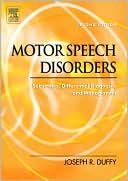Aphasiology: Disorders and Clinical Practice
The Second Edition of Aphasiology: Disorders and Clinical Practice offers a uniquely balanced and comprehensive presentation of aphasia, encompassing both theoretical study and clinical practice.\ New to this Edition:\ \ Updated information on many topics, such as functional assessments and treatments (including ethnography and outcome measures) and medical aspects and treatments keep the text current and competitive in the field.\ A new chapter on dementias supplements current chapters on...
Search in google:
Aphasiology: Disorders and Clinical Practice, 2/e offers a uniquely balanced and comprehensive presentation of aphasia, encompassing both theoretical study and clinical practice. Written in a highly accessible style, this text carefully explains and illustrates key paradigms in research and treatment. The author uses tables to summarize essential points and to provide historical overviews.Structured according to a course outline, the book begins with etiology and moves quickly to clinical assessment. It teaches diagnostic thinking with respect to the relationships between symptoms and hidden impairments in cognitive terms. This thinking is illustrated with research as well as more explicitly with assessments and treatments. Through this approach, a future clinician should acquire an appreciation for the scientific investigation that supports a clinical discipline.The Second Edition features updated information on many topics, such as functional assessments and treatments (including ethnography and outcome measures) and medical aspects and treatments keep the text current and competitive in the field. It also includes a new chapter on dementias supplements current chapters on other cognitive disorders (right hemisphere dysfunction and traumatic brain injury). Each of these chapters includes additional information on rehabilitation as well as up-to-date information on current research. The content has been reorganized within and between chapters to maximize readability and ease of use as a course text. Psycholinguistics background has been restructured to improve efficiency and readability of the text. Chapter 6 on “Special Investigations” has been eliminated from this edition and its topics have been redistributed, improving the overall flow of the text.
Preface.1. INTRODUCTION TO ACQUIRED LANGUAGE DISORDERSDiagnosing aphasiaDescribing aphasiaExplaining aphasiaTreating aphasia2. CAUSES OF THE APHASIASStrokeIschemic strokeHemorrhageTumorFocal cortical atrophyClinical neurological examinationClinical brain imagingLocalization and dissociationClinical syndromes of aphasiaExceptional aphasiasSummary and conclusions3. CLINICAL ASSESSMENT AND DIAGNOSISThe first visitDiagnostic decisionsStandard testingPsychometric constraints: The PICADiagnosing syndromes: The Boston ExamNumerical classification: The WABDiagnosing modular impairment: PALPABrief tests and bedside screeningSupplemental testsNotes on interpretationMartin Exeter’s initial reportSummary and conclusions4. INVESTIGATING APHASIA IN GENERALBasic research in clinical aphasiologyWord processingSentence comprehensionExplaining sentence comprehension deficitObject namingProductive word-findingReading wordsAphasia in bilingual individualsSummary and conclusions5. INVESTIGATING SYMPTOMS AND SYNDROMESAgrammatismAsyntactic comprehensionAnomic aphasiaConduction aphasiaWernicke’s aphasiaUniversal aphasiaMartin Exeter’s aphasiaSummary and conclusions6. DISCOURSE AND COMMUNICATION Pragmatic languageDiscourse and textDiscourse comprehension with aphasiaAphasic discourse productionConversationNonverbal modalitiesOverall functional statusAssessment of functional communicationAssessing life participationMartin Exeter’s functional skillsSummary and conclusions7. RECOVERY AND PROGNOSISStroke and functional outcomesMeasuring recovery of languageApproaches to prognosisType of strokeSeverity of impairmentType of impairmentOther factorsMaking the targeted prognosisBilingual recoveryExplaining recoveryMartin Exeter’s recoverySummary and conclusions8. PRINCIPLES OF LANGUAGE RESTORATIONCognitive stimulationProgrammed stimulationMeasurement and generalizationWord-findingComputer-assisted treatmentGroup treatmentEfficacy of standard aphasia treatmentMedical treatmentsHealth care topicsNotes from the clinicSummary and conclusions9. TARGETING SPECIFIC DISORDERSStudying individual casesAgrammatic production: Empirical treatmentsAgrammatic production: Theory-driven treatmentsAsyntactic comprehensionWernicke’s aphasiaConduction aphasiaAnomic or mild aphasiaReading impairmentsSummary and conclusion10. FUNCTIONAL THERAPEUTICS Philosophy: The clinical-functional gapFunctional stimulationCompensatory behaviorsInteractive therapiesLife participationThe challenge of severe or global aphasiaPsychosocial adjustmentDocumenting functional outcomeMartin’s conclusionSummary and conclusions11. RIGHT HEMISPHERE DISORDERSClinical neuropsychologyAwareness of deficitsLeft neglect and readingVisuospatial orientationConstructional skillsProblems with soundEmotion and prosodySpeaker meaningDiscourseWhat is RHD syndrome?Clinical assessmentTreatmentRecovery and outcomesSummary and conclusions12. TRAUMATIC BRAIN INJURY Head traumaThe trauma unitNeuropsychological assessmentAttentionMemoryExecutive functionsPersonality and behaviorInsight (awareness)LanguagePragmatics and discourseCognitive rehabilitationRecovery and outcomesSummary and conclusions13. DEMENTIASDiagnosis and assessment of dementiaAlzheimer’s diseaseOther causes of dementiaDementia of Alzheimer’s typeLanguage with Alzheimer’s diseaseMedical treatmentsCommunicative assessmentCognitive-communicative interventionsSummary and conclusionsReferences.
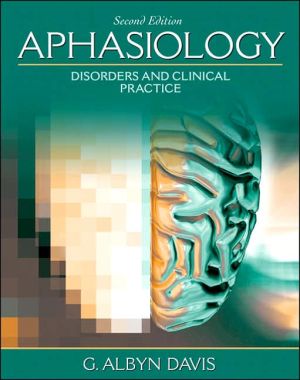
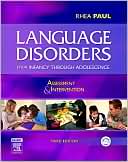

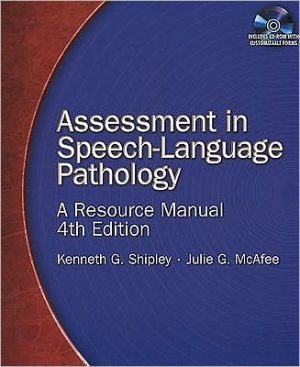
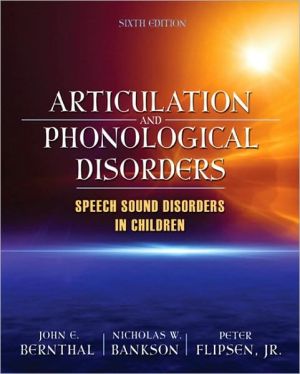
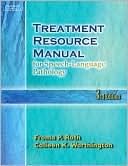
![Introduction to Audiology [With CDROM] Introduction to Audiology [With CDROM]](/application/data/covers/31/18/9780205593118.jpg)
